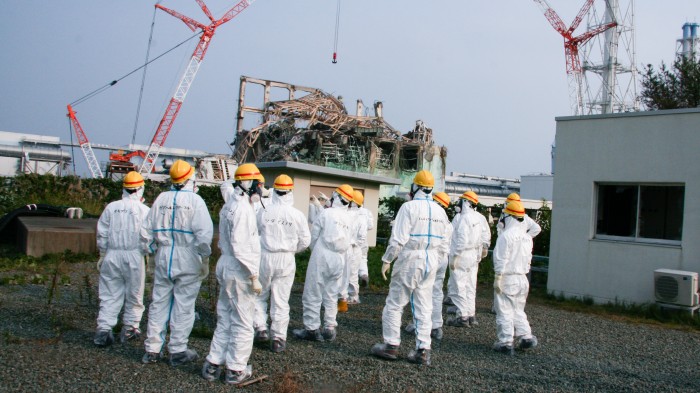The Effects of Fukushima Linger after Five Years, but Not from Radiation
The Fukushima Daiichi nuclear accident, which began on March 11, 2011, uprooted thousands of Japanese people, set the worldwide nuclear power industry back a decade, and caused a run on potassium iodide (said to help ward off thyroid cancer). What it didn’t do was kill anyone from radioactive fallout.
That was the conclusion of the six-volume Report on the Fukushima Daiichi Accident, released in August 2015 by the International Atomic Energy Agency. About 1,600 people died in the evacuation of the surrounding area, however—many of them elderly and infirm hospital patients and residents of nursing homes. That would seem to indicate that the response to the accident was more deadly than the accident itself.
A Greenpeace report released this week, “Nuclear Scars: The Lasting Legacies of Chernobyl and Fukushima,” takes a harsher view, saying that “the health consequences of the Chernobyl and Fukushima catastrophes are extensive.” But most of the report dwells on Chernobyl, and it notes that the primary effects of Fukushima were “mental health disorders, such as depression, anxiety and Post Traumatic Stress Disorder.” Put another way: fear and panic resulting from the accident (and from the loss of homes and livelihoods) were more dangerous than the radiation.

To be sure, diagnoses of thyroid cancer have gone up among children exposed to radiation from Fukushima; but that’s almost certainly due to increased screening, as this Wired analysis details. Heightened screening led to higher detection, resulting in “an epidemic of diagnosis,” according to H. Gilbert Welch, a professor of medicine at the Dartmouth Institute for Health Policy and Clinical Practice.
One lasting effect of the accident has been a potentially catastrophic shift in Japan’s energy policy. All Japan’s nuclear reactors were shut down in the wake of Fukushima, and although the government of Prime Minister Shinzo Abe is moving to reopen selected plants, public opposition is widespread. The result: Japan now plans to build as many as 47 new coal plants in the coming years, which would eliminate any chance of meeting the country’s emissions reduction targets under the Paris climate accord.
If they get built, the health and environmental effects of those plants will far outweigh any of the damage from the nuclear accident itself.
(Read more: Wired, Japan Times, New York Times, “Going Nuclear: The Global Power Picture”)
Keep Reading
Most Popular
Large language models can do jaw-dropping things. But nobody knows exactly why.
And that's a problem. Figuring it out is one of the biggest scientific puzzles of our time and a crucial step towards controlling more powerful future models.
The problem with plug-in hybrids? Their drivers.
Plug-in hybrids are often sold as a transition to EVs, but new data from Europe shows we’re still underestimating the emissions they produce.
Google DeepMind’s new generative model makes Super Mario–like games from scratch
Genie learns how to control games by watching hours and hours of video. It could help train next-gen robots too.
How scientists traced a mysterious covid case back to six toilets
When wastewater surveillance turns into a hunt for a single infected individual, the ethics get tricky.
Stay connected
Get the latest updates from
MIT Technology Review
Discover special offers, top stories, upcoming events, and more.